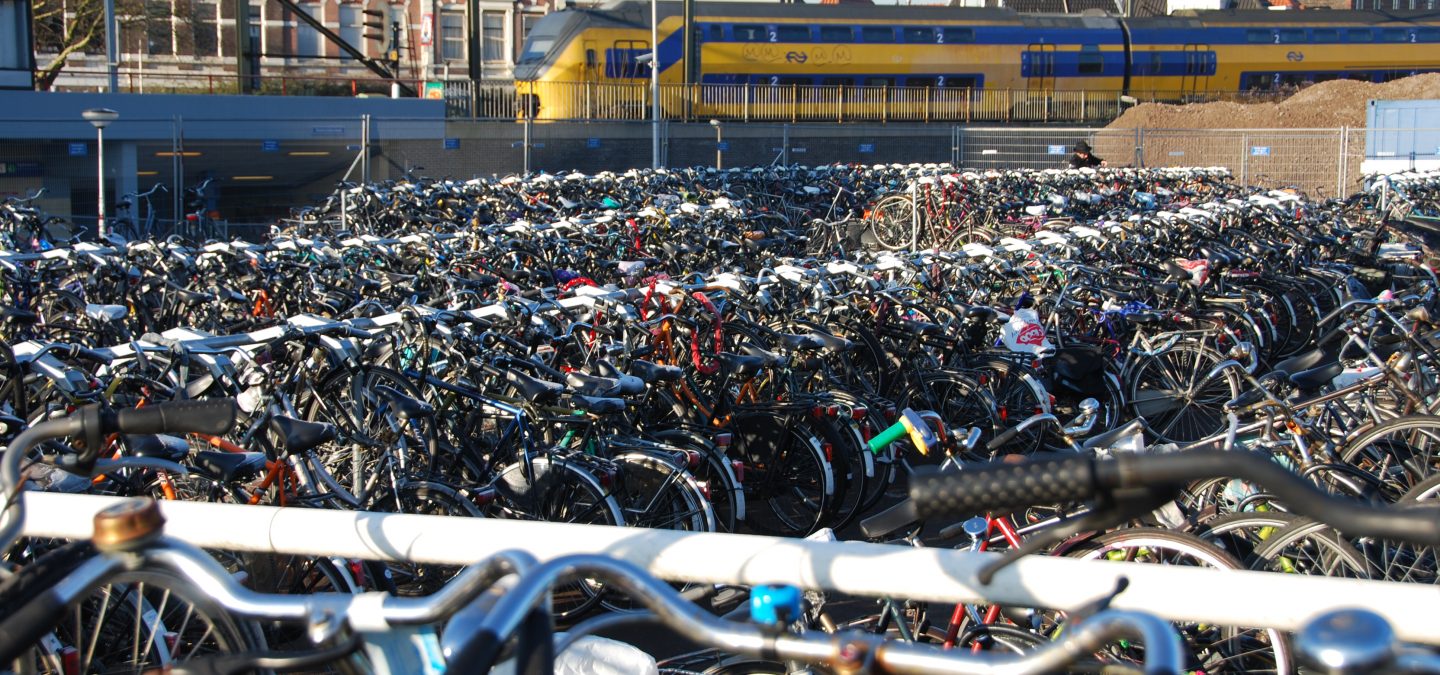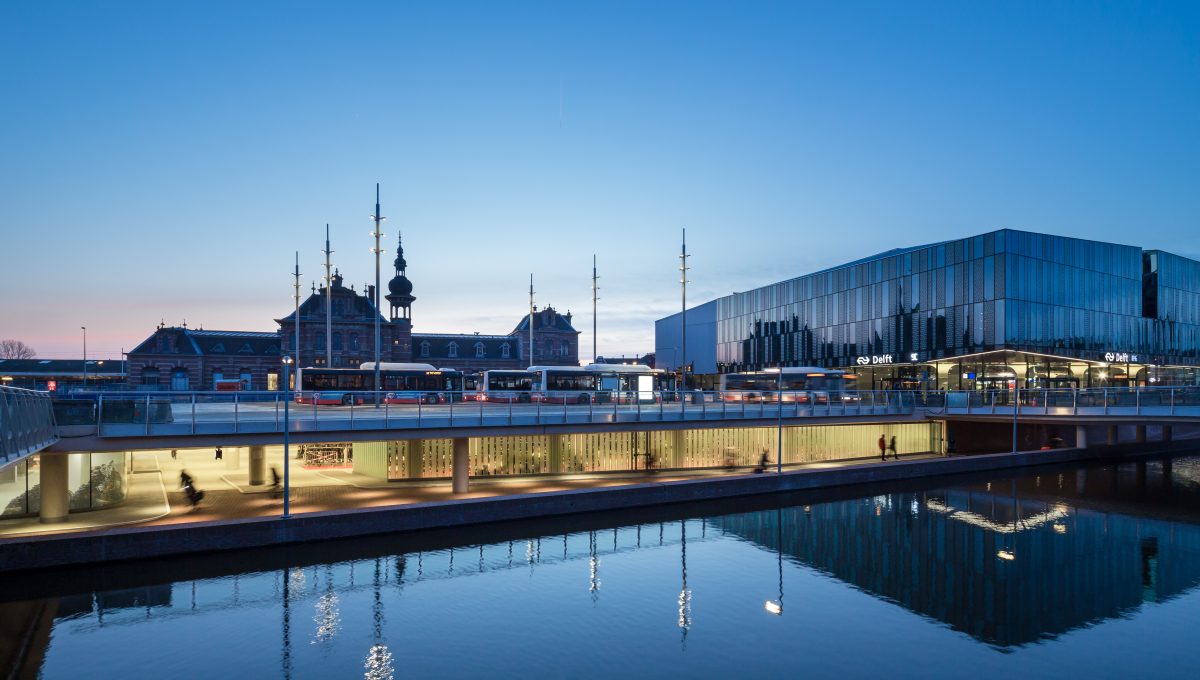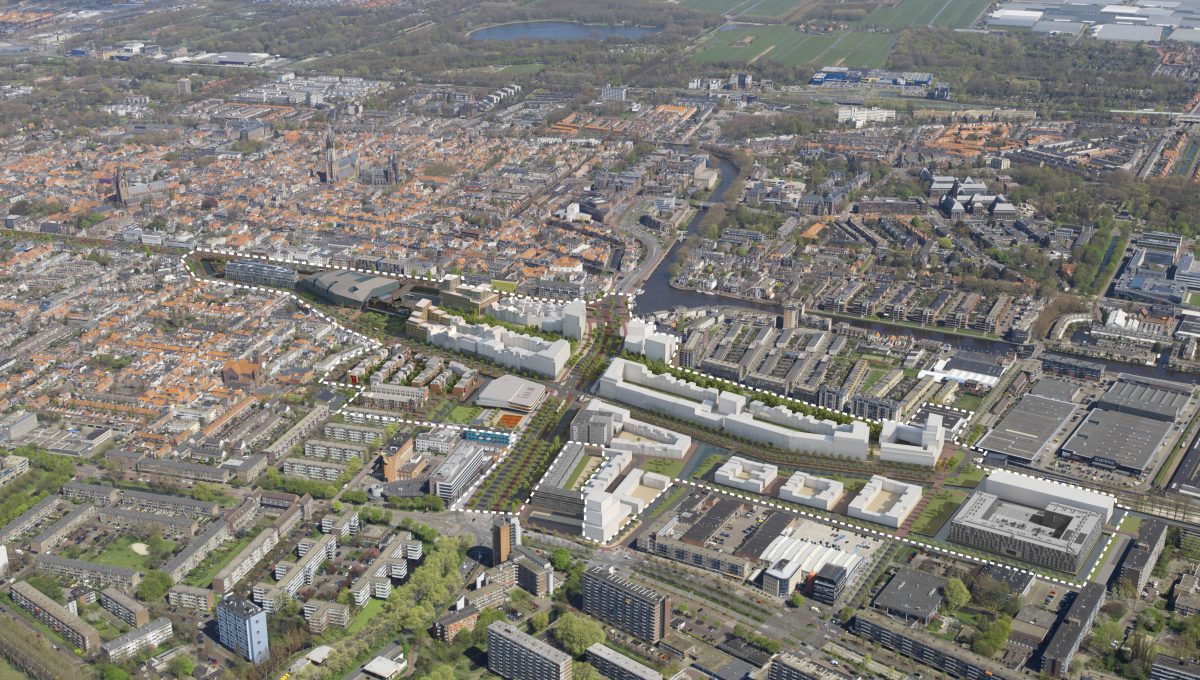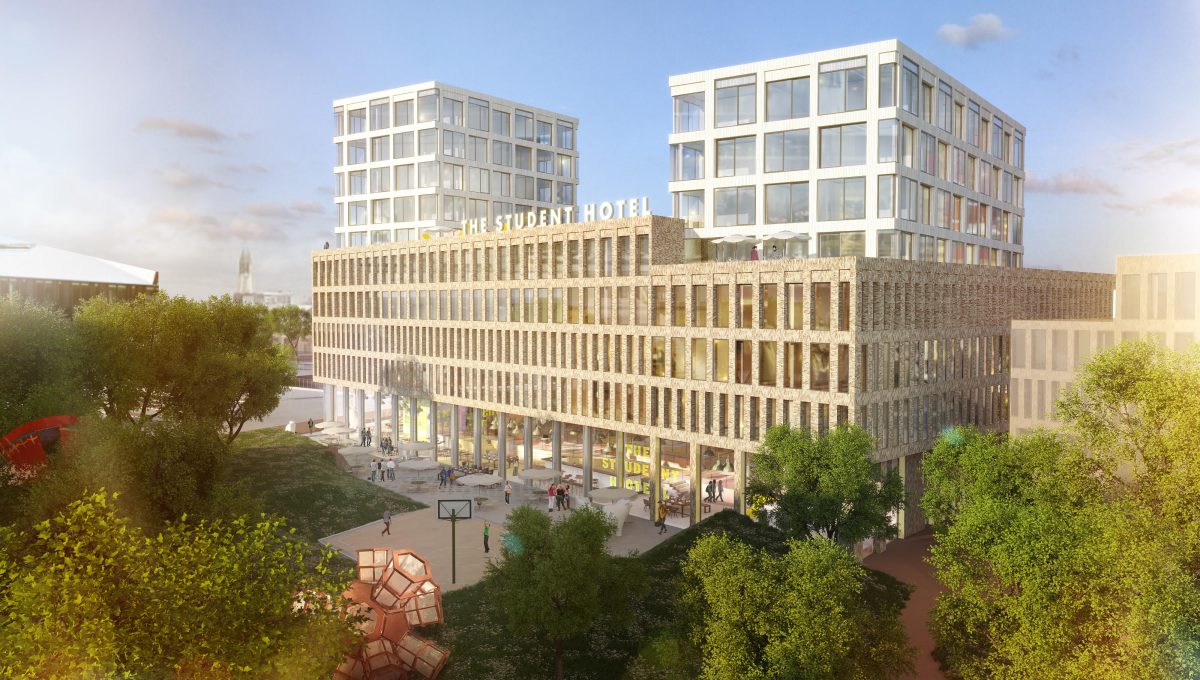
Keep up with our latest news and projects!

Until 2015, a railway line cut straight through the old part of Delft, allowing train passengers to peek into the buildings along the railway. Anyone traveling to Delft today, though, plunges underground. A new ‘railway’ zone – Spoorzone – has emerged above ground as a result, right in the middle of the old centre of Delft. ‘It’s always interesting, no matter where you are in the world, when an open space is created in an old historic city for you to develop,’ says Gido Ten Dolle, director of urban development for the municipality of Delft. ‘How are you going to connect other areas to the new area and make sure it becomes just as vibrant?’
‘We set our targets 12 years ago. Initially, the main focus was on building an underground railway line. Put simply, the project basically entailed breaking open the ground, throwing in some tubes and closing it up again. We were only able to start our work above ground recently. Finally we were able to start implementing the masterplan from 2015, with its new station, dwellings, offices, green areas and water.
‘While working on the project, we were suddenly hit by the economic crisis. We had to make huge sacrifices during the crisis years in terms of our initial plans and ambitions. Now the tunnel is there and the economic situation has improved. There’s room for investment again. And that’s what led to the ‘Delft Herstelt’ advisory group’s recommendation led by Wim Deetman in 2016. The goals have been revised. Now we’re really going to get moving on the area above ground.’
‘We’re currently reassessing the Integral Development Plan. This reassessment is a key item on the agenda. A great deal has changed in many areas over the past 12 years, such as sustainability, mobility and parking. In September 2016, the development firm Ontwikkelingsbedrijf Spoorzone Delft BV advised us to ride the momentum, instead of hurrying to put plots on the market. You also have to see whether the 2014 programme still makes sense. Do the housing development projects still tie in with the needs? Can we really make this an area for the inhabitants of Delft, for example by providing housing for the elderly as well? In November and December, we had sessions with the advisory board for Spoorzone, experts and the executive board of the municipality. In July 2017, the revised plan was drafted by the executive board.’
 NS-Station, Delft - © Jannes Linders
NS-Station, Delft - © Jannes Linders
 aerial photo, Delft - © Gemeente Delft
aerial photo, Delft - © Gemeente Delft
‘We’re looking explicitly at how the new area can be connected to other parts of the city. Spoorzone is expanding the centre, but it’s also establishing a connection between the old centre and city districts that used to be split off from the centre by the railway. The emergence of a new area in the middle of the city has certainly prompted people to start thinking. For example, a care centre that’s now situated on the outskirts of the city would like to move to a more central location because its elderly residents want a livelier environment. Or imagine a housing corporation that plans to build new rental properties across from rental properties built in the 1980s. The gap in quality between these properties would be visibly huge. Try explaining that to your residents.’
‘The inhabitants are feeling increasingly involved, and that’s an organic process. You can compare it to dismantling a house. First you strip it and take everything out, at which point it hardly feels like a house anymore. Then you create a shell out of it. And finally you start to make it your own again by choosing wallpaper and laying carpets. That psychological moment literally came about when we started to lay bricks and plant trees. In the autumn, there was non-stop buzz about the area on social media. Until then, people had only seen the drawings of the bricks and the trees. Then they saw it all for real: so that’s the kind of brick they used, that’s how they laid the bricks and this is what the trees look like. People started actually thinking about it. “Was that the right tree to use?” Psychologically speaking, the area becomes more a part of you. Just like when you lay a carpet and choose a décor for your kitchen. Now we’re involving people in the design of the park. I think that we’ll see more residents getting involved in the coming year.
‘I hope that we can hang on to the positive feeling that exists right now. That could be tricky. It will take five to seven more years before most of this area has been developed. It will be another three or four years before we even start building in some places. It will be interesting to see whether people’s patience will wear thin or not. How long will the residents keep it up? Now some places are being completed and they look good. But soon the trucks will be back again with sand and building piles. People may start to wonder whether this will ever end.
 New, Delft - © Gemeente Delft
New, Delft - © Gemeente Delft
‘Looking back, we definitely should have split up the development of this area into sub-areas and handled the development and financing of the whole area in phases. But that wasn’t possible because we had to come to an agreement with the state in one single deal. That forced us to take an all-or-nothing approach, with all of the major risks that this entailed. We also decided to be pragmatic and put the development of the area into a limited company. That enabled us to tighten the reins and determine the pace of developments. It also allowed us to stay more independent and keep developments at more of an arm’s length from political decision-making. It was a good choice, but it certainly had a downside as well. It has made it more difficult for the inhabitants of the city to become co-owners of the area that we’re developing. That’s something we’re going to have to pay close attention to in the coming years. The people of Delft are going to want have more and more of a say in the urban planning, and they will get it too. I see that as a positive development. We’re going to literally give the Spoorzone back to the city.
‘The project continues to be a massive learning curve. The area is in a constant state of flux. It’s consistently dynamic. Once we’ve laid the paving stones, for example, the next task is already waiting. That’s a huge challenge for the authorities too. Authorities are well-trained at carrying out projects: when something is finished, there’s no need to look back. But now we need to train the people to understand that it will never be finished. They shouldn’t be disappointed about that. But right now they still are. We’re still too result-driven: a project has been completed, there are new lamp-posts, a few trees and a bench. Just like in the plan. But then it turns out people aren’t sitting where they’re supposed to be sitting but prefer the other side. My colleagues are sometimes too quick to see that as failure. That’s not necessarily the case. In fact it’s good. You learn with each other and you see an area starting to take shape. In that respect, Spoorzone is a unique living testing ground for urban development.’
Interested? Join The City At Eye Level and share your story!
Discover moreDelft’s Spoorzone covers an area 24 hectares large. The clients of this project are the Ministry of Infrastructure and the Environment and the municipality of Delft. The project management of the railway tunnel and the public transport hub is in the hands of ProRail and the municipality of Delft/Spoorzone Delft Development Company. The Ministry of Infrastructure and the Environment, the municipality of Delft, the province of South Holland, Stadsgewest Haaglanden and the urban region of Rotterdam are all co-financing the project.